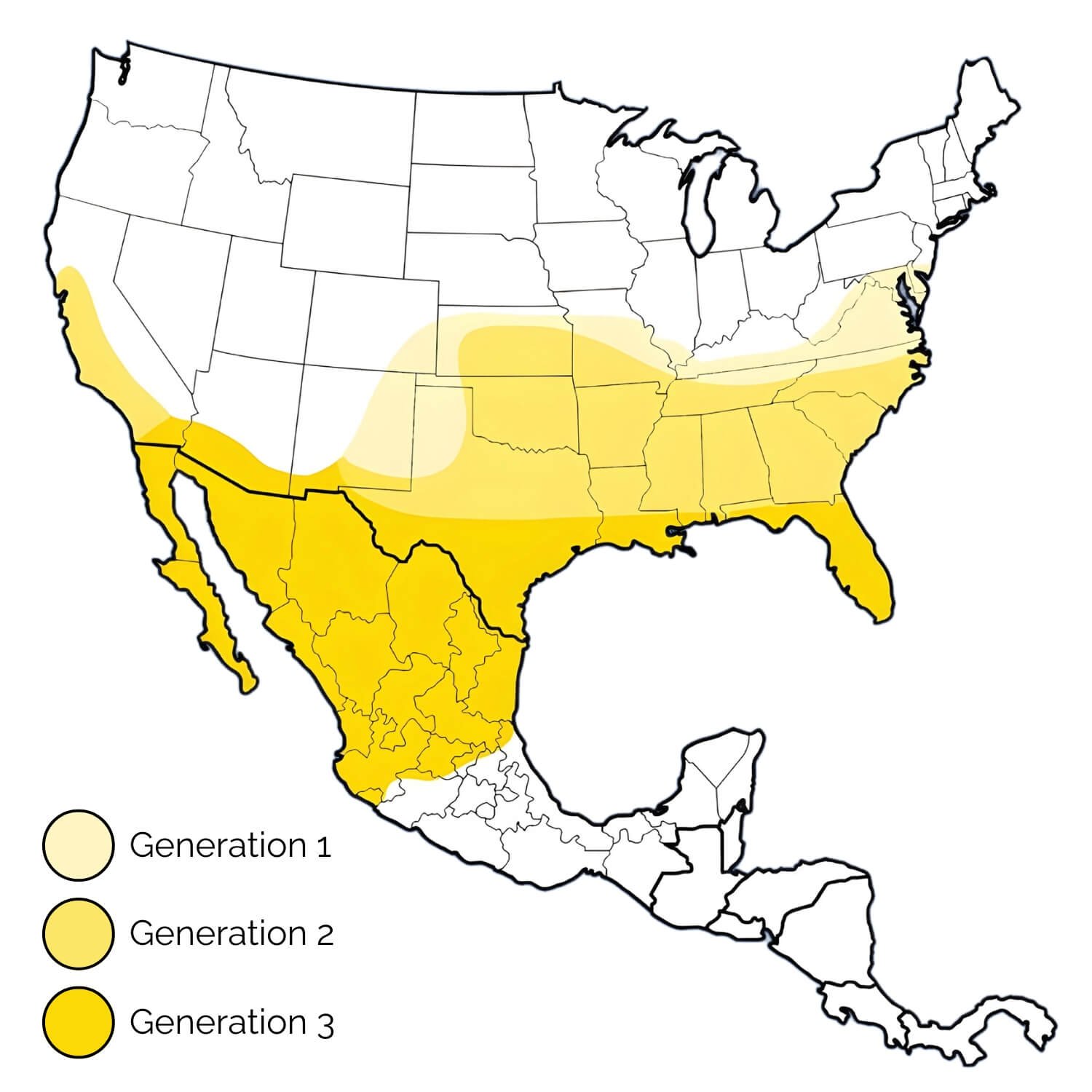Our Asheville Butterfly Trail pages are pupating. 🚧 Pardon our metamorphosis and email us if you have any questions!

Gulf Fritillary
Agraulis vanillae aka Dione vanillae
Photo: Sharon Mammoser
Reems Creek Nursery at 76 Monticello Rd, Weaverville, NC
A vibrant orange Gulf Fritillary can be spotted amongst the native plant offerings at Reems Creek Nursery. Thanks to Dr. Matt Bertone, NC State University, for providing the photo for the giant wings!
Hosted & Sponsored By:

Meet the Butterfly
Bright orange on top and a spotted pattern underneath? You might be seeing a Gulf Fritillary!
With an average 3.5 inch wingspan, these butterflies appear in Western NC from May through the first hard freeze.
Their upper wings warn predators that they are distasteful, while the white, brown, and orange under wings likely serve as camouflage.
Photo: Sharon Mammoser
Females are generally larger than males and their upper wings are somewhat darker and more extensively marked.
Males have longer and more pointed forewings.
Photo of a mating pair: Umbris/CC BY-SA 3.0 /Wikimedia Commons
Butterfly cologne?
Male Gulf Fritillaries have special tricks to help them find a mate. As a male and female circle each other in the air, he releases aphrodisiac pheromones to settle her down.
Once she perches, he perches beside her to make his big move. He opens and closes his wings around her antennae to cover them with his scent to convince her they were meant for each other.
Monarchs aren’t the only butterflies that migrate!
Gulf Fritillaries migrate north to the southeastern United States in spring to breed. We have multiple generations here in North Carolina.
In late summer and early fall, they migrate south, as far as South America to overwinter.
Unlike monarchs who migrate both ways, individual Gulf Fritillaries only migrate one direction. Their offspring return the next year.

Can You Spot the Brushy Legs?
Fritillaries are members of the Brush-Footed Butterfly group (Nymphalidae).
Although they are insects and insects have six legs, it looks as though Nymphalidae only have four legs.
Their orange front legs are very short and appear hairy. Look for them just below the eyes.
The “brushes” on the Gulf Friillaries’ front legs are used to smell and taste prospective host plants (among other things) to be sure they are Passionflowers before laying eggs.
Photo: Sharon Mammoser
And did you notice the spiral between the front legs? That’s the proboscis, a straw-like tongue. The butterfly unrolls it to drink nectar.
Their furry “labial palps” project above the eyes and act as their snout. It helps them to sense when food is around.r “sno

A Passion for Passionvine
Gulf Fritillaries lay their eggs on all Passionflower species, preferably the newest growth and freshest tendrils.
Two species are native to Western North Carolina: Passiflora incarnata and Passiflora lutea.
Let’s take a closer look at each…and then we’ll find caterpillars!
Illustration: Lauren Gingery

Caterpillar Host Plants
Purple Passionflower
Passiflora incarnata
Our native bees love their nectar and pollen. In fact, carpenter bees are considered the leading pollinator of Passionflowers.
Thank goodness someone is pollinating them, otherwise, we wouldn’t have delicious and nutritious passion fruit, also known as maypops.
Photos: Brandy Mizilca and Elizabeth McCormick
Yellow Passionflower
Passiflora lutea
Also known as dwarf passionflower, this species has a small flower that is easy to miss...
...unless you’re a Passiflora bee (Anthemurgus passiflorae). It's a specialist that only feeds the pollen of this flower to its offspring.
Photos: Debbie Roos and Kim Bailey
Protective Superpowers
1
The caterpillars’ spikes look scary to predators, but they’re harmless.
Photo: Heather Rayburn
2
Many Passionflower species contain toxic chemicals like glycosides, alkaloids, strychnine, and nicotine. When eaten, those toxins make the caterpillars, and their adult butterfly form, taste bad to predators. (Don’t worry! Passion fruit is safe and delicious for humans to eat-- when it is ripe.)
Photo: Sharon Mammoser
3
Their brown chrysalis fools predators by passing as an unappetizing dead leaf!
4
The adults’ bright orange and black colors are a warning signal to vertebrate predators, like birds, that the toxins they ingested make them distasteful. If their warning colors aren’t enough, they can release a stinky fluid from their special abdominal glands.
How You Can Help
Gilf fritillaries are not threatened, but you can still help reverse decline by taking action:
Plant passionvine in your yard to serve as a host for caterpillars.
Include flowers in your garden for nectaring adults.
Remove exotic invasive plants that displace native species.
Avoid pesticide use.
Learn more about Pollinator Gardening Principles and create a certified pollinator habitat in your yard.
Photos: Gulf Fritillary on Feay's Palafox by Bob Peterson from North Palm Beach, Florida, Planet Earth!, CC BY-SA 2.0 via Wikimedia Commons.
Thanks!
Many people and organizations made this Butterfly Trail possible. See the full list.
For the Gulf Fritillary, we’d like to give a special thanks to:
UNCA NEMA lab for their research and illustration support
Dr. Matt Bertone, Department of Entomology and Plant Pathology, NC State University for taking photos of their butterfly specimens for the freestanding wings
Reems Creek Nursery for hosting the station
Amy Landers at Landers Creative for webpage design
Jill Jacobs at Spriggly’s Beescaping for interpretive sign design
And the incredible photographers credited above, including:
Sharon Mammoser, NatureForMySoul.com
Brandy Mizilca
Elizabeth McCormick
Debbie Roos, Chatham Mills “Pollinator Paradise” Garden and North Carolina Cooperative Extension.
Kim Bailey, Milkweed Meadows
Heather Rayburn
















